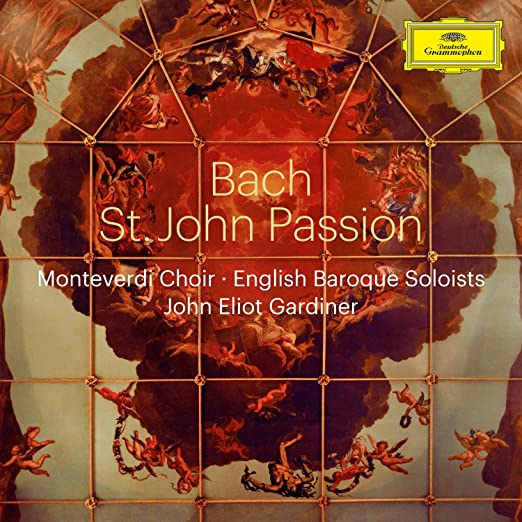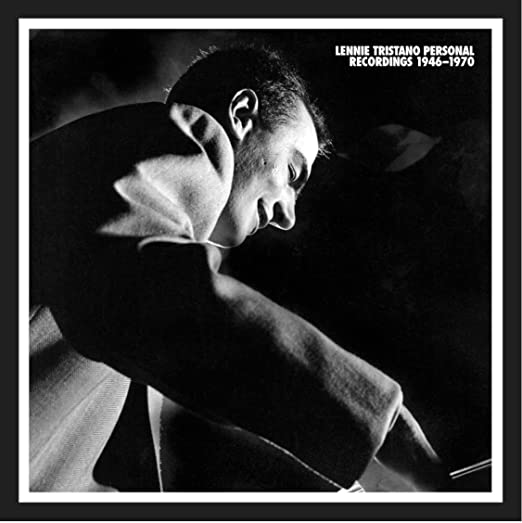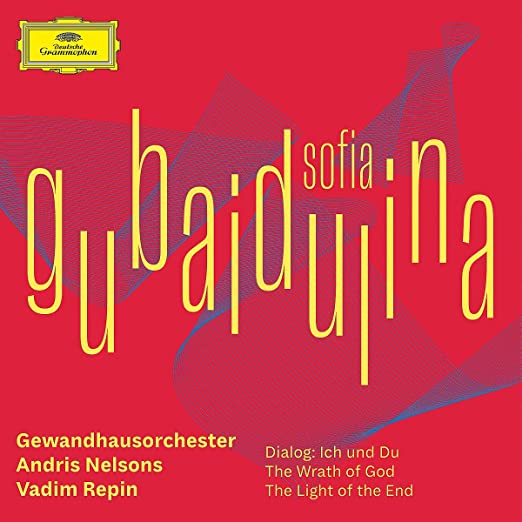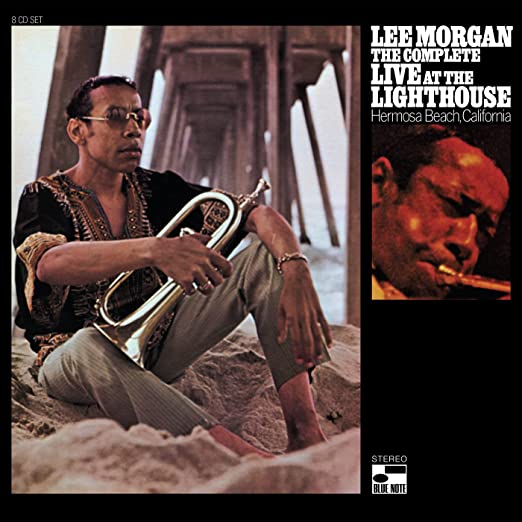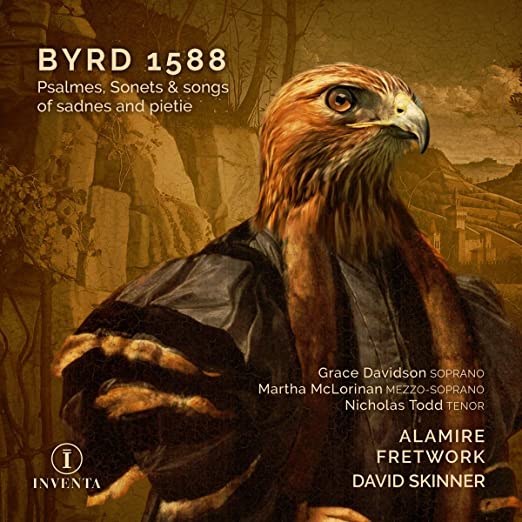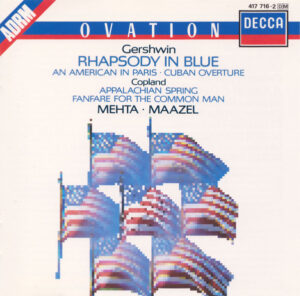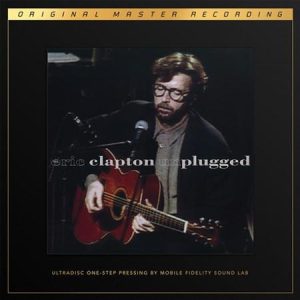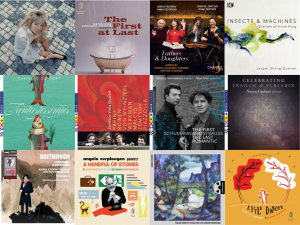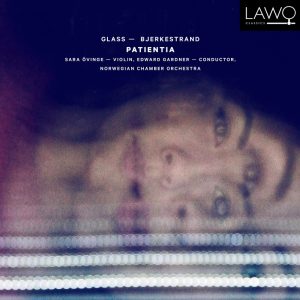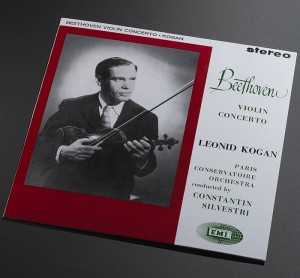Prokofiev. Viktoria Mullova. [Violin Concerto No. 2; Sonata for Two Violins, Solo Violin Sonata]. Viktoria Mullova, violin. Frankfort Radio Symphony Orchestra, Paavo Järvi, conductor. Onyx 4142. (live recordings).
I am predisposed to like any recording by violinists, Jennifer Koh, Vadim Guzman, Rachel Podger, Gidon Kremer, Alina Ibagimova, and Viktoria Mullova and am seldom disappointed.
The centerpiece of this latest Mullova recording is Prokofiev's much loved Violin Concerto No. 2, a work often indulged for its romanticism in modernist clothing. Mullova will have none of that. Without shortchanging the work's unquestioned beauty, she goes directly for its backbone and Järvi goes with her. The result is a performance that is both emotionally moving and commanding. It will not tug the heartstrings as some performances of the work will do but it will never cloy.
The test of her approach is the gorgeous second movement andante. What keeps this movement both lovely and Mullova is the firmness of her bowing. Lushness can drown this music. The work was composed in 1935, unofficially written to compete with Stravinsky's written a couple of years earlier: so there was no room in such a work for lushness. That said, set alongside Stravinsky's concerto, it is clearly the more emotionally open and expressive concerto, Mullova's style notwithstanding. The third movement arrives like a wonderful wind storm. Exquisite and liquid, no; but passionately electric and true to the composer, absolutely. Russian on Russian?
I love that Mullova chose to include two of Prokofiev's violin sonatas in the program and hope they were a part of the same live program, which it would appear they were.
Serge Prokofiev remains a hauntingly elusive composer, harder to 'peg' than Stravinsky but at his best, as he is here, no less a composer. And Viktoria Mullova is his best friend.
Eighth Blackbird. Filament. [chamber works by Dessner, Muhly, Son Lux, and Philip Glass]. Çedille 90000 157.
I find this album irresistible. Is it the great audio engineering? the performers? the music? my music system? Filament has my furniture dancing. The music is expressly grandfathered by Philip Glass, whose famously minimalist style has never done anything for me. But the descent from the grandfather to Dessner and Muhly in particular has resulted in a joyful/lyric eloquence I've never heard from Glass.
The instruments—flute, violin, percussion, clarinet, cello, and piano—are played with great brio by a six person Chicago based ensemble called Eighth Blackbird, whom I will have to track down more of and recommend you do the same.
Bryce Dessner (b. 1976), whose seven part suite of Murder Ballads opens the program, sets a very high bar with one of the most brilliantly persuasive blends of folk and classical styles I've ever heard. Nico Muhly's (b. 1981) Doublespeak flows almost seamlessly from the Dessner but stays closer to the Glass sound. Son Lux's (b. 1979) To Love and This is My Line, to quote the notes, "are mixes, stringing together the delicate musical filament of the album... which employ only sounds gathered from the rest of the album," except for a soprano. Philip Glass's (b. 1937) Two Pages is the Philip Glass we all know and love (or don't). Its presence is presumably intended to preside over the music of his younger compatriots; but if that is the aim, it doesn't work. Rather it demonstrates the greater imagination of his grandchildren as it relentlessly, maddeningly...well you get the idea.
Philip Glass aside, this is a wonderful album. Pay him no attention, just hit the "next" button as he goes by. Fortunately he doesn't get the last word here as we return to a somewhat overblown but still more listenable piece by Son Lux at the close of the album.
Alfred Schnittke. Sonatas for Cello and Piano Nos. 1 and 2. Trio for Piano, violin, and piano. Irina Schnittke, piano. Olga Dowbusch-Lubotsky, cello. Mark Lubotsky, violin. NCA 234042.
As I've written here before, the world seems just now to be catching up with Russian modernist Alfred Schnittke (1934-1998). His countrymen and women (Gubaidulina) have known and admired him for years, but for some reason it has taken the rest of us longer. He has seemed too wiry, guarded, insufficiently approachable. Now nearly 20 years since his death we hear the large, complex, passionate personality somehow inaccessible before. To my ears he sounds like a son of Benjamin Britten in his Sonata for Cello and Piano No. 1 (1978). Dissonant poignance. The third movement largo is haunted by Britten. Played here by Russian cellist Olga Dowbusch-Lubotsky, presumably Mark Lubotsky, the violinist's, wife, it is some of the most moving music for cello I know of. And the piano, played by the composer's widow, is critical to it success.
The Sonata No. 2 (1993/1994), composed for Mstislav Rostropovich nearly twenty years later, feels like a larger work and asks a good deal more of the cello. This music has moved on from Britten into more... existential territory. It suggests that larger questions are being asked and more forthrightly. Even its middle movement (of five) largo is deeply earnest. There is no hint of poignance here. The last two movements, an impetuous allegro followed by a whispering lento, take us out into a silent place where no questions are answered. Dowbusch-Lubotsky is extraordinary in this work. This is the difficult Schnittke we ignored for so long and so foolishly.
With the composer's Trio for Piano, Violin, and Cello (1985/1992), dedicated to his wife, Rostropovich, and Lubotsky, we are, though elusively, in more traditional territory: a sophisticated modernist treatment of traditional material. It is as if we are hearing Schubert and Mahler through modernist ears. This is the sort of thing—reinterpretive, slanted perspectives—that Schnittke is most noted for. It is as if we are in the composer's head as he fights with the music he grew up on. We sense him saying to himself, 'I love this music but it won't quite work any longer.' Like the second cello sonata, this music resists us some with its discomfort. In its engagement with the music of the past, it seems to lack a life, a musical identity of its own. It shares some of the quality of Ives' games with American popular and folk songs; but it is less playful, more uncomfortably dreamlike. Schnittke is remembering music but remembering it out of phase. Ives possesses the music he plays with; Schnittke is possessed by it. If we let ourselves, we are mesmerized by his tribulations. It is a strangely haunting piece of music as it was clearly intended to be.
I wrote recently that the new album of Bartok's music for violin was the most exciting new album I'd heard this year. This release of Schnittke's cello music is equally exciting.
Ornstein. Piano Quintet. String Quartet No. 2. Marc-André Hamlin. Pacifica Quartet. Hyperion A68084.
This is the album I'd planned on opening with this time out but it's been fighting me all week. Russian American Leo Ornstein's (1893-2002!!) Piano Quintet (1927) opens as a stew made up of Schumann, Gershwin, and Rachmaninov striving to rise above its ingredients to become its own new thing. Which in some memorable lyric moments it does. But overall it is very restless music. The second movement is quieter but still far from being at peace with itself. It wants to maintain a thoughtful mood but periodically becomes urgent and distracted. The concluding movement moves between vigorous eastern European folk dance and the Rachmaninov moments of the first movement. Rhapsody, dance, rhapsody, dance. And then we return to the mood of the second movement. Then back to rhapsody, dance... on and on. I write about music in this not entirely useful descriptive way when I can't get a grasp of it as a whole, can't feel its musical identity. As I say, it's been a week-long fight.
I came to this album in pursuit of the Pacifica Quartet who wowed us with their Elliot Carter and impressed us with their Shostakovich. They are always worth hearing and with pianist Hamelin they certainly get all that's to be gotten from the Ornstein Quintet. They treat the Quartet No. 2 as a continuous tone poem for string quartet, which strikes me as the right approach. I would not recommend hearing it back to back with the Piano Quintet, but on its own, with some down time between the two works, it has its somewhat discursive points to make.
Equipment used for this audition: Resolution Audio Cantata CD player; Blue Circle BC 107 preamplifier and NSP amplifier; Jean Marie Reynaud Offrande Supreme, V2 loudspeakers; Crimson interconnects and speaker cable; and Volex power cables.
Bob Neill, a former equipment reviewer for Enjoy the Music and Positive Feedback, is proprietor of Amherst Audio in Western Massachusetts which sells equipment from Audio Note (UK), Blue Circle (Canada), Crimson (UK), Jean Marie Reynaud (France), Resolution Audio (US), and Tocaro (Germany).








